Sometimes a message of resilience can come in an instant, and often not predictably. The IRT Powerhouse on 11th Avenue isn’t giving a speech or waving a flag, and it’s not a talking head seeking to shout a point of view at passersby or boast of its strength. Yet, the sight of this 1904 building on a cold winter day conveys resilience at a time when a nation could sorely use it.
Resilience is comforting, as in a beloved chamois shirt or wool slippers that feel right each chilly autumn as if they are brand-new. Those little things mean a lot. When our lives are unsettled, each of us finds comfort in the resilience of the people within our circles. We find it in various aspects of our lives and surroundings, such as nature; in literature, stories, and poetry; music and art; sports and hobbies; and the healing arts. Many find founts of renewal in our respective faiths and beliefs. Buildings signify resilience in their endurance through the generations, their histories and qualities, their art and iconography. They express something of the era they came from, its values, contributions, and struggles.
During the unsettling days since Donald Trump won the election in November and became president, this is what the powerhouse that the Interborough Rapid Transit Company (IRT) constructed has expressed and the meanings it continues to evoke. Walking by the IRT Powerhouse one winter day, I looked up at this towering building and found it affirming, even soothing, and thought-provoking, in its sheer physical durability, beauty, and magnificent character. Moreover, it provides perspective on the important role of immigrants.
It’s still here, precious and glorious as ever, and yet vulnerable because it’s not landmarked. Currently, the building is in a landmarking limbo. The New York City Landmarks Preservation Commission has confirmed it has been working with building owner Con Ed to develop a designation and regulatory framework that would enable the building to be a city landmark while continuing its utility operations. It has outlasted decades of all kinds of weather and use, and seen changes in ownership and purpose.
The IRT Powerhouse
Still, this grand structure is here – as sure as the day the IRT opened it 113 years ago, to supply electricity to New York City’s subway system – occupying a full Manhattan block on 11th Avenue from West 58th to West 59th streets. In and of itself, its survival is amazing, particularly in a city that builds, razes, rebuilds, and constructs anew so much of the time. Its existence stirs both comfort and questions for our time.
A Statement of the Era
The comfort flows out of its character and enduring beauty. Here is a magnificent structure that has had immense staying power through the ages. For the exterior design, the IRT directors hired renowned architect Stanford White, who volunteered his service. White designed a grand Beaux Arts-style exterior intended to be a temple of technological and industrial marvel, one every bit as grand as the era’s museums, monuments, and train terminals. Its façade of Roman brick is punctuated by gorgeous keystones and rich terra cotta embellishments, from garlands to watchful eagles and lightning bolts that symbolize power.
Upon opening, it could power up to 800 subway trains that linked a rapidly expanding city of 3-million people. Consider the democratic impulse of that achievement, and of the eventual reach of the New York City subway through the boroughs.
In a time that is so unsettled with the ascendance of the Trump presidency, just the sight of the majestic powerhouse reinforces the idea that what each generation builds and achieves can last – how precious this is and how it deserves honor. This mammoth structure symbolizes so much about the America and New York City of the early 20th century, a nation and a city at a time when inventions and industrialization meant enormous transformation, progress, and possibility. The powerhouse and subway represented crowning achievements of ingenuity and grueling labor.
Indeed, immigrants largely built the subway system and its tunnels and other structures, primarily Italian and Irish immigrants, plus Germans and Greeks, as urban historian Clifton Hood has written. Some Italians migrated back and forth from Italy. The workforce included African Americans, too.
In comparing that generation to ours, the immigrants then had no easy pathway, facing prejudices, taunts, and various obstacles. Unskilled laborers earned $1.50 to $2.25 a day, and literally used hand tools such as picks, shovels, and percussion drills to dig out the subway, as Hood wrote. Their work wasn’t just difficult but often unhealthy and dangerous. Workers died in various accidents during its construction.
Yet they assumed these jobs at a time, in the first years of the 20th century, when the doors of the United States were officially open to them. The IRT Building represents something American that many, many immigrants helped to build, in an era of dreams, both big and small, when the country beckoned with a promise of better lives for them. They could put their parcels in a suitcase or a bag and come to America. My Italian-American grandparents were in that generation during the first years of the 20th century.
Open Doors, Then Closed
Each generation of immigrants, such as those who built the glorious subway system, encountered barriers and biases. Bigotries and fear have bubbled up and hardened at certain times into stricter government policies that encoded intolerance. During what became known as the Palmer Raids, Attorney General A. Mitchell Palmer led raids in 1919-1920 in which authorities detained thousands of immigrants he and others targeted as communist sympathizers and “reds.” The government deported hundreds. In 1917, the federal government enacted the first significantly restrictive immigration law, implementing a literacy test and barring immigrants from a wide swath of the Asia-Pacific countries. In the 1920s, the U.S. established immigration laws that, through quotas, severely cut back on new immigration from Southern and Eastern Europe, particularly the 1924 Immigration Act. These quotas were not liberalized until Congress passed laws to redefine the immigration policies in the 1960s and 1970s.
The country is at a similar precipice today, one in which we can speak up and shape whether America will remain a beacon to the world or whether it will turn inward. These actions and laws of prior generations reverberate for many today, as we see the Trump Administration seek to enact a travel ban of immigrants from six countries and a barring of refugees from Syria. The administration is proceeding with the ban despite much evidence that it will do nothing to keep Americans safer from terrorism. Likewise, President Trump endeavors to build a border wall with Mexico at a cost of as much as $21.6 billion, as Reuters and others have reported. Across the country, raids and detentions have swept up not just the undocumented immigrants with serious criminal offenses but Dreamers and others who have been in the U.S. for years.
When you ride the subway, or walk along 11th avenue and look at that magnificent powerhouse, think of the generation of immigrants who constructed it all and the generations who have maintained it ever since. Think of the immigrants’ wives in the tenements of the early 20th century – tending to the children, cooking, sewing, and scrubbing – and of their sons and daughters playing in the streets below and laughing together. Then look around a subway car today, and see the glorious melting pot, the peoples whose roots are from all over the globe who ride in a single subway car together. I never forget this fact as I look around a subway car, the glory of the melting pot that makes America. Then think of the ones who are afraid tonight, all over this land, of children crying, fathers worried, and mothers frightened.
Will this become an era of our pride or our shame?
Further Exploration and History
For more on the history, technological achievements, and architecture of the IRT Powerhouse, see Mindful Walker’s articles:
The Place That Powered the Subway Lines
Taking in the Subway’s Old Powerhouse
The nonprofit group, Landmark West!, which works to achieve landmark status for individual buildings and historic districts on the Upper West Side and to protect properties from insensitive change and demolition, is continuing to advocate for designation of the IRT Powerhouse:
Save the Powerhouse
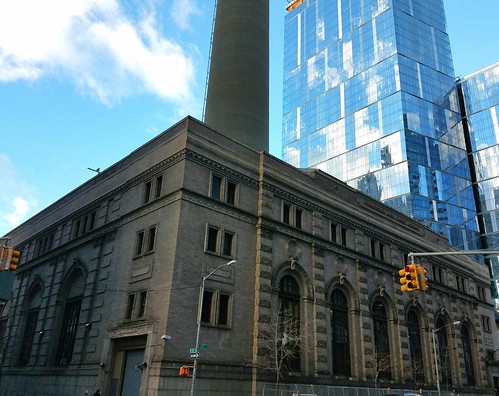
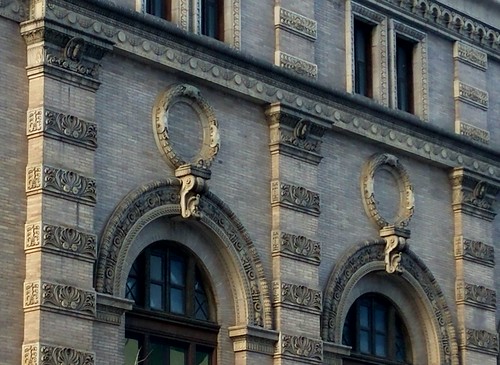
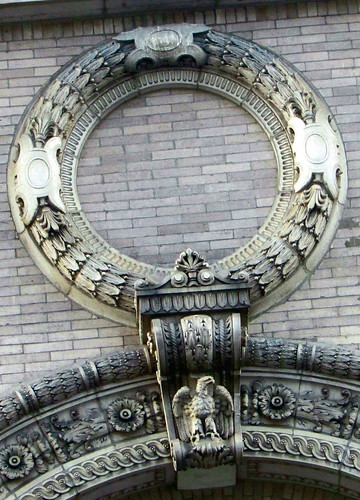
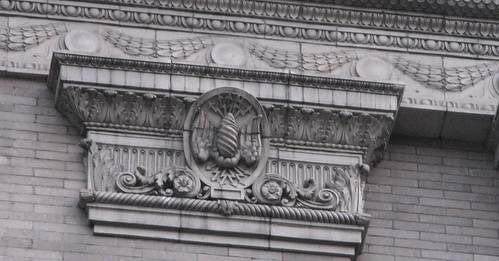
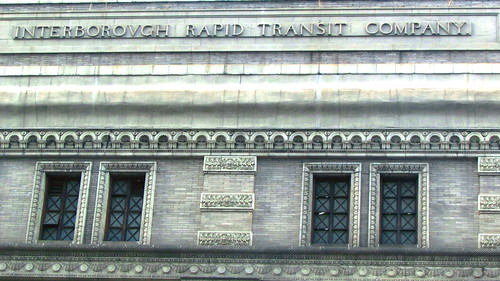
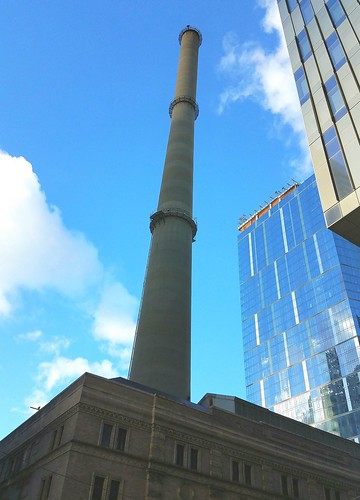



Beautiful building…and on 11th Avenue! I can’t believe I lived in the City and had never seen it. Here’s hoping Con Ed will choose to partner to save this amazing structure. Nice touch with our family’s history as Italian immigrants…if it weren’t for their courage, there would be no us!
Dear Phyllis,
Thank you! Funny that you should mention not having seen it. On the day of this recent walk, I was at first accompanied by a friend who has lived in the city for a long time – and she had not seen it either! Come to think of it, I don’t believe I saw it during my first years of living in the city. I bet many people would be amazed at its history.
Let’s hope Con Ed and the LPC will work something out. It is a treasure, and should never be lost!
Speaking of treasure, we were blessed because of the risk-taking and fortitude of our family. You are absolutely right!
With much gratitude for their journey and our connection,
Susan
Thank you, Susan, for your powers of observation and the ability to share with Americans the things that we fail to notice in our hectic everyday lives.
Bob,
Thank you so much! It actually helps me to slow down, notice, appreciate, and ponder, too – so if it brings something to your attention or causes you to reflect as well, that is great!
Gratefully,
Susan